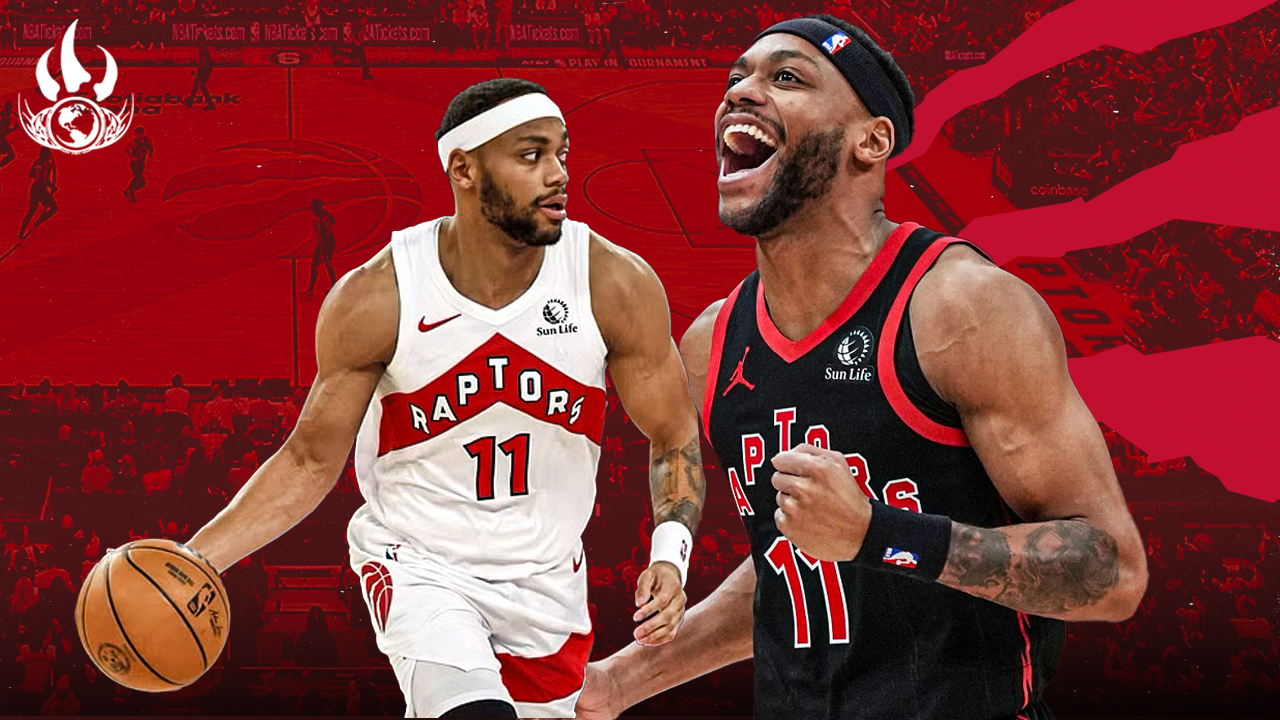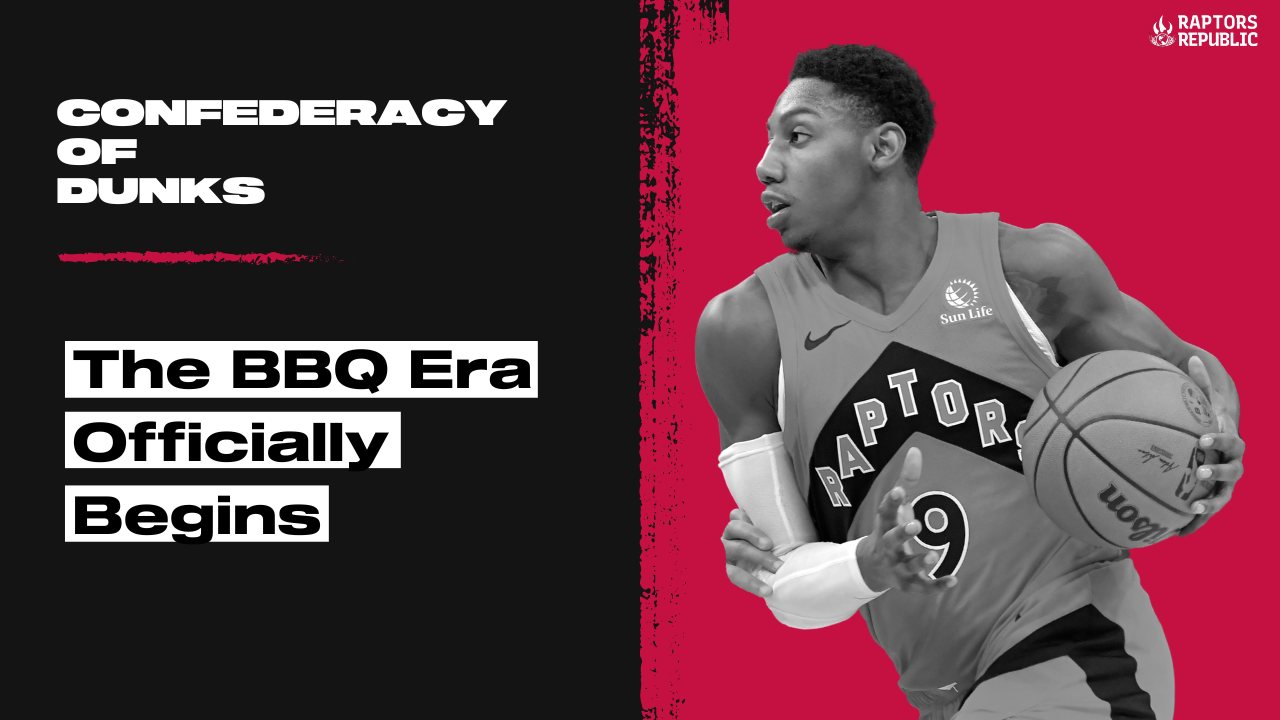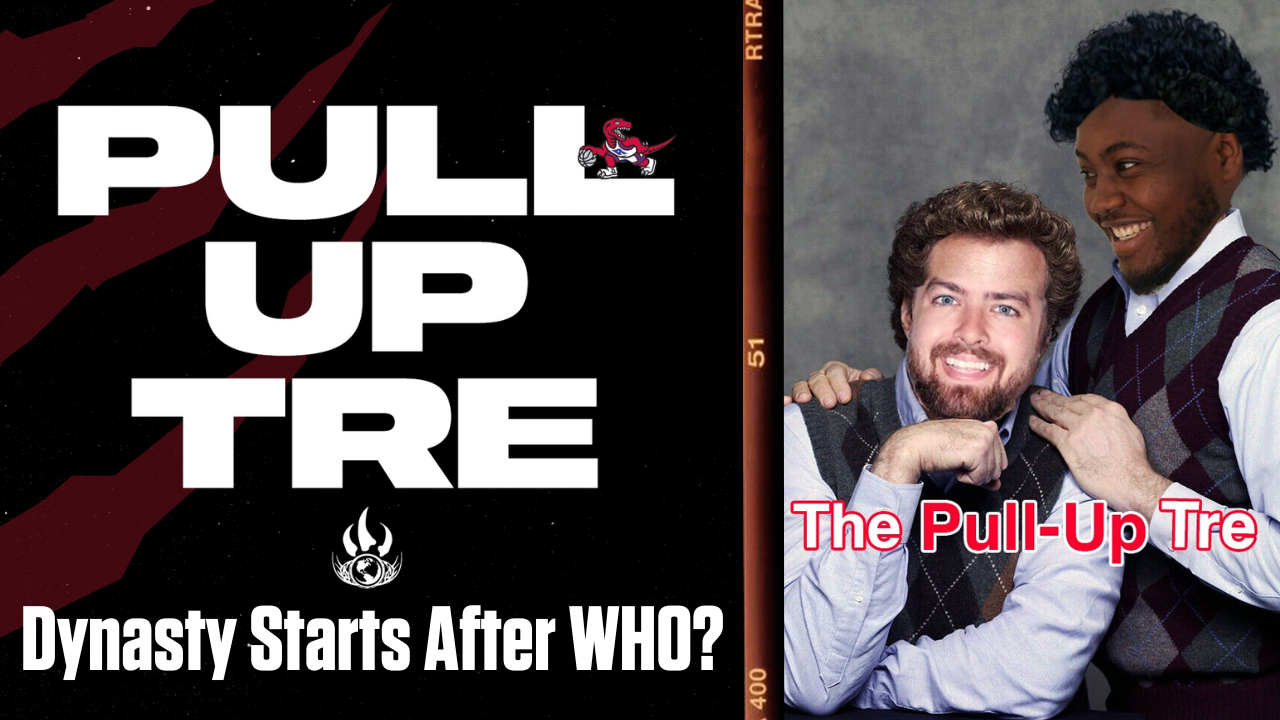It didn’t take Bruce Brown long to fit into the plan for the Toronto Raptors. His first two baskets came just the way Toronto likes to score them — in transition, the second as he eurostepped smoothly around a defender left helplessly in the air. He hit a corner triple, then started screening for Scottie Barnes and doing damage that way. He scored 15 points in a loss — though he won his minutes by 11 points.
But it hasn’t been so rosy since. His scoring has dropped off, and he’s been committing the most unforced of turnovers once or twice a game by fumbling passes or dribbles. While he’s still been cutting and screening well, his driving game hasn’t yet taken off in Toronto. His shooting has been sporadic. And Toronto, of course, is 0-3 since the trade.
I thought after the Raptors traded Pascal Siakam for Brown (and picks and other pieces) that keeping Brown would be contingent on the Raptors winning some games. They surely haven’t been doing that. But Brown does seem to fit alongside the core trio of Scottie Barnes, Immanuel Quickley, and RJ Barrett. If you want to include Jakob Poeltl there — whom the Raptors desperately have been missing with him out with a sprained ankle — it would make sense; Brown is excellent cutting around elbow and delay actions, where Poeltl excels. The fit is clear, even if it hasn’t been working. And there are signs that it already has been, if you squint.
Toronto’s net rating since the trade has been a worst-in-the-NBA negative-13.2. (Oof. Siakam is a good player. Of course. He is missed.) With Brown on the court, it has been just negative-4.2. And with both Brown and Barnes on the court, Toronto has actually won its minutes with a net rating of plus-5.4. That’s something, even if the sample size is small.
And there are plenty of reasons why the fit here could work much better. Brown hasn’t been playing anywhere close to his best, and he’s spent lots of time alongside Quickley, who is still learning how to maintain his aggression while playing point guard. (This a different story, but even if Quickley’s assist total has been, shall we say, inflated by friendly stat-keepers, he’s done well hitting ahead in transition and keeping the ball moving. He has done less well finding his own offense and getting up a boatload of triples. It will come as he learns the team and his own place within it. But the transition is taking time.)
Brown has been terrific as a screener for Barnes. He has finished on the short roll and even when he hasn’t touched the ball he has sucked in tags to create space for orbiting shooters. He gets good contact, and with Poeltl out, he might be Toronto’s best at actually hitting someone. (Him or Quickley, both are great.) He’s shooting 90 percent from within three feet in Toronto, and he’s taking almost half his shots there. He plucks the low-hanging fruit that, without Poeltl, few in Toronto can access. That’s the good, offensively.
But the screening hasn’t transitioned to other areas of the game; he hasn’t moved the defense with his off-ball screening or his handoff screening (or his off-ball cutting or handoff cutting). And his driving frequency has shriveled in Toronto, as he hasn’t found the lanes that he did in the wiiiide-open courts in Indiana and Denver. He hasn’t created for himself — 85 percent of his field goals have been assisted, way up from 65 percent in Indiana. And Toronto has really lacked self-creation since losing Siakam. While Brown has fit well in some ways, plenty of his game hasn’t yet caught the flight to Toronto. He was one of the better drivers in basketball for a role player, and that hasn’t shown up at all. It’s impressive that the Raptors are still winning his minutes with Barnes, and that should only improve as he starts to find the rest of his juice.
Part of the reason why he’s been successful is because his defense has been very solid. He has defended the pick and roll well, whether as the screener defender or the ballhandler defender. He has switched smoothly and stayed in front of most, even if he was bullied a tiny bit by DeMar DeRozan in Toronto’s loss late to Chicago. He’s probably Toronto’s best point-of-attack defender, which is extremely valuable. Even if the offense hasn’t been where he or Toronto would like yet, the defense has been the calling card. Especially when Toronto gets Poeltl back as the anvil, Brown will do even more damage as the hammer at the point of attack.
Even if Brown isn’t on the roster the next time the Raptors are ready to compete, having good players always helps youngsters develop on both ends of the court.
Ultimately, the argument for keeping Brown in Toronto is simple: He was just the sixth man on a championship team — one whose approach on both ends the Raptors are trying to emulate — so he can do the job in Toronto. That’s the argument in a vacuum. He’s a surefire piece, so you keep what you know can work.
That’s the argument for keeping Brown. He’s been pretty good, and he will be better.
The argument for trading him, unfortunately, is just as simple; he is a good player who will net assets in a trade, and the Raptors — who are bad — have little use for good (and well-paid) role players with no star potential. Brown is relatively expensive, on the first of a two-year, $22 M contract, and rookies are on extremely cheap deals. The Raptors just traded away OG Anunoby and Siakam in part, according to Ujiri, due to the financials of the team. Trading those players just to re-sign Quickley this offseason for big money, perhaps offer Gary Trent jr. a raise, and then pay Brown next offseason and Barnes the one after would put Toronto right back into the financial straits from which it just extricated itself. That’s an expensive team, once again — would it be good enough?
On top of all that, maybe Brown doesn’t rediscover his great driving game in Toronto without the huge benefit of shooting across the rotation. Oh, and, he’s been publicly speculating about his fit with other teams, which, yes, he’s being shopped, but it’s still a weird look. The hope has to be that his focus will be absolute if he remains in Toronto, but it’s not totally a guarantee at this point. The team still remains in flux, and it is still taking its toll on Toronto’s focus. At some point, and soon, the Raptors need to not have the guillotine of change hanging over their heads.
It’s hard to know which of those arguments would sway the Raptors. Masai Ujiri and Bobby Webster are trying to pack two years’ worth of business into two weeks, and the trade market for Brown is said to be hot. If some team offers a first-round pick and a young player with enormous upside (say, Quentin Grimes?), do the Raptors say no to such a deal?
Which might be my cowardly answer to the original question. If Toronto gets an offer that’s too good to pass up, it takes it, which is a win. If not, it keeps Brown, which is probably a win. If Toronto has a line on a free agent this offseason, it can waive Brown (he has a team option for his second year) and open up a max-contract slot with a few simple moves. But given the scorched-earth nature of modern free agency, it’s more likely Toronto cannot use such contract space. Perhaps the best way to use that money would be on Brown, anyway. The new CBA is punitive, but Brown is on a short deal, and he’s young and admired across the league.
Toronto has flexibility, which Ujiri has spent a long time seeking. How he manages Brown will be a good look into how he will use that flexibility. Ujiri said recently that he has no intention to use all three (potentially four) of his picks this upcoming draft. Toronto has plenty more moves to make this season. Whether offloading Brown is one of them will dictate when Toronto is ready to compete again, and whether flexibility, or talent, is more important to the franchise in its current state.



